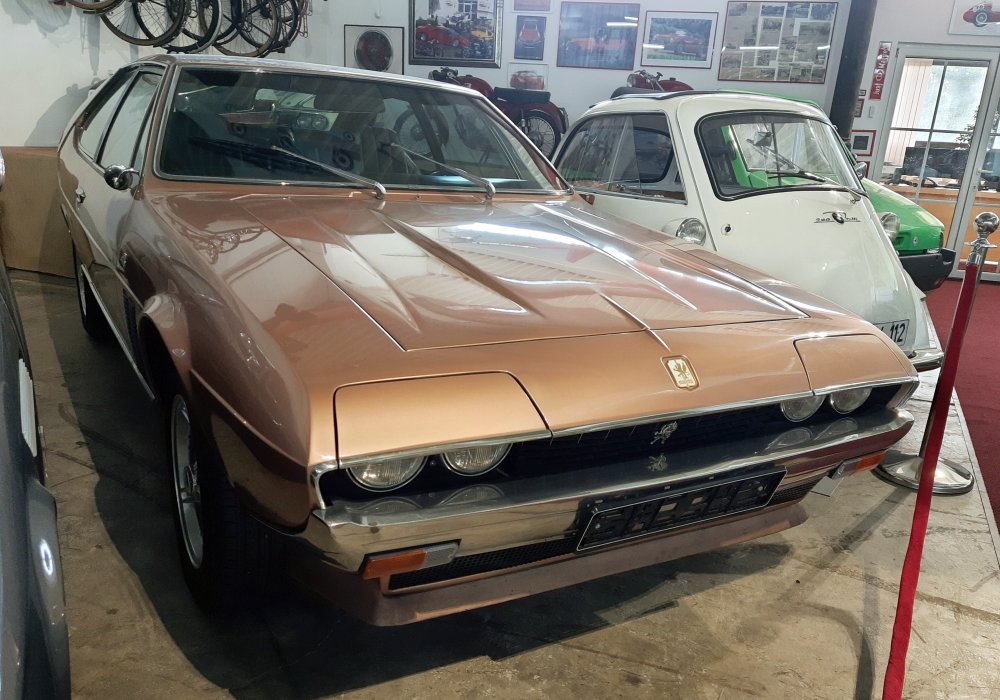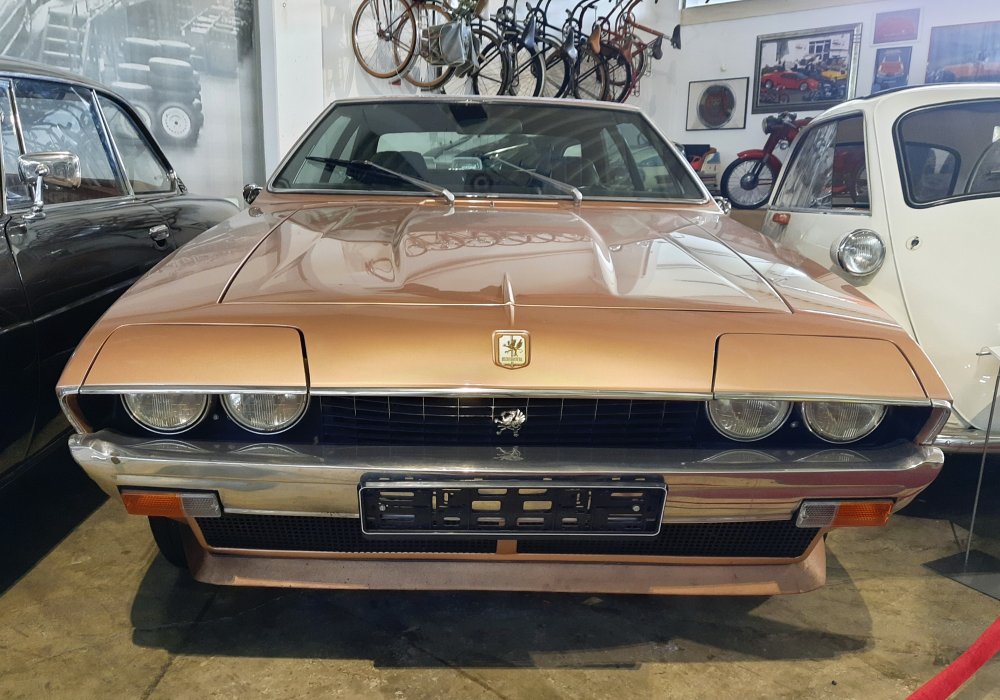Description
The ISO Lele IR6 was the original expression of ISO Rivolta’s final grand touring vision — a sophisticated 2+2 coupé that combined the marque’s signature blend of Italian craftsmanship and American power with a new sense of modernity and comfort. Introduced in 1969 and produced until 1972, the Lele IR6 was designed to succeed both the Rivolta IR 300 and complement the sportier Grifo as a luxurious four-seat GT for the discerning driver. It was the last major project launched under Piero Rivolta before the company’s acquisition by Alejandro de Tomaso, and it represented everything ISO had learned from a decade of building world-class grand tourers: strength, refinement, and a deep respect for both style and engineering.
The Lele took its name from Lele Rivolta — wife of ISO’s young managing director, Piero Rivolta — and was developed during a period of optimism and ambition for the brand. ISO had established itself as one of Italy’s most technically proficient carmakers, thanks to the genius of Giotto Bizzarrini and the design brilliance of Giorgetto Giugiaro and Marcello Gandini. For the Lele, ISO again turned to Bertone, where Gandini, fresh from designing the Lamborghini Miura and Espada, created a car that was unmistakably modern yet unmistakably ISO. His design combined wedge-shaped confidence with classical proportion — a car that was elegant, low-slung, and purposeful, capturing the late-1960s shift from curvilinear forms to sharper, more architectural lines.
Beneath its striking exterior, the Lele IR6 retained the robust mechanical DNA that had defined ISO since the early 1960s. Power came from Chevrolet’s legendary small-block V8 — the same engine family that powered the Grifo GL 300 and Rivolta GT. In the Lele, it was the 327 cubic inch (5.4-litre) version, tuned to produce around 300 horsepower in standard form and up to 350 horsepower in higher-output specifications. Mated to either a smooth GM Hydramatic three-speed automatic or a close-ratio four- or five-speed ZF manual gearbox, the engine gave the Lele the effortless pace expected of a grand tourer. Top speed was quoted at around 230 km/h (143 mph), with 0–100 km/h (62 mph) in just over seven seconds — performance on par with contemporary Aston Martins and Maseratis, but with ISO’s trademark durability and low-stress drivability.
The chassis of the IR6 was a development of the structure first introduced in the Rivolta IR 300, itself one of Bizzarrini’s finest achievements. Constructed from pressed-steel sections welded into a semi-monocoque frame, it provided remarkable rigidity and strength. The front suspension featured unequal-length wishbones and coil springs, while the rear employed ISO’s signature de Dion axle with twin trailing arms, a Watts linkage, and inboard disc brakes. This layout gave the Lele excellent composure and balance, combining supple ride quality with precise handling. Power-assisted steering and ventilated four-wheel disc brakes ensured the car could be driven with confidence at high speeds or through narrow city streets. It was a car equally suited to fast continental journeys and relaxed everyday motoring — a duality that defined the ISO philosophy.
Visually, the Lele IR6 stood apart from anything else in its class. Gandini’s design was both daring and disciplined. The front end featured hidden headlamps behind retractable panels, a smooth bonnet line, and a cleanly sculpted grille flanked by delicate chrome accents. The side profile was long and low, with frameless windows and a subtly rising waistline that flowed into a truncated Kamm-style tail. Large glass areas gave the cabin a light, airy feel, while the sharp edges and taut surfaces reflected the futuristic optimism of late-1960s Italian design. The proportions — long bonnet, short rear deck, and low roofline — gave it a distinctly sporting presence despite its four-seat layout.
The interior was designed for comfort and luxury rather than austerity. The IR6’s cabin featured deep leather seats, rich carpeting, and a beautifully arranged dashboard with full Veglia instrumentation. The central console housed the gear lever, heater controls, and switches within easy reach, while wood veneers and chrome highlights added warmth and sophistication. The rear seats, while best suited for shorter journeys, were more spacious than those in most contemporary GTs, and the boot provided ample room for luggage — reinforcing the Lele’s role as a genuine gran turismo. Optional equipment included air conditioning, power windows, and a premium Becker radio, ensuring that long-distance travel was as relaxing as it was rapid.
On the road, the Lele IR6 delivered exactly what ISO intended: effortless performance with composure and refinement. The Chevrolet engine provided smooth, linear power delivery, capable of cruising comfortably at high speed for hours on end. The car’s long wheelbase and sophisticated suspension made it exceptionally stable, while its steering offered precision and feedback uncommon in cars of its size. Drivers praised its blend of comfort and control — it was less temperamental than many Italian exotics and more engaging than typical American-powered GTs. The combination of torque-rich V8 power and an impeccably balanced chassis gave the Lele a unique personality: powerful but unflustered, luxurious yet responsive.
Production of the ISO Lele IR6 was limited, as with all ISO models. Between 1969 and 1972, approximately 125 Chevrolet-powered Leles were built before the company transitioned to Ford-supplied engines for the later Lele F. Each car was hand-assembled at the ISO works in Bresso, with individual attention to fit, finish, and customer specification. Prices were high — comparable to an Aston Martin DBS or Maserati Indy — but buyers received a level of craftsmanship and exclusivity that few rivals could match.
The Lele IR6 occupies a fascinating place in the history of Italian grand touring cars. It was at once a symbol of the optimism of the late 1960s and a reflection of ISO’s unique identity — an identity rooted in precision engineering, aesthetic discipline, and the seamless blending of performance and practicality.
Today, the ISO Lele IR6 is regarded as one of the most underrated grand tourers of its era. Collectors admire its Gandini styling, robust mechanicals, and rarity, while enthusiasts praise its balance between American reliability and Italian sophistication. It stands as a reminder of a time when ISO dared to compete with the giants of Europe and succeeded through intelligence and integrity rather than volume or extravagance.
The ISO Lele IR6 was, in every sense, a grand tourer for the thoughtful driver — fast, elegant, and unflinchingly honest. It represented the culmination of ISO Rivolta’s engineering ideals: a car that could cover vast distances in supreme comfort, powered by one of the world’s greatest engines and clothed in one of Italy’s most distinctive designs. It was both the beginning and the end of an era — the last ISO to be created entirely under Rivolta family stewardship, and one of the most quietly brilliant GTs of its generation.



